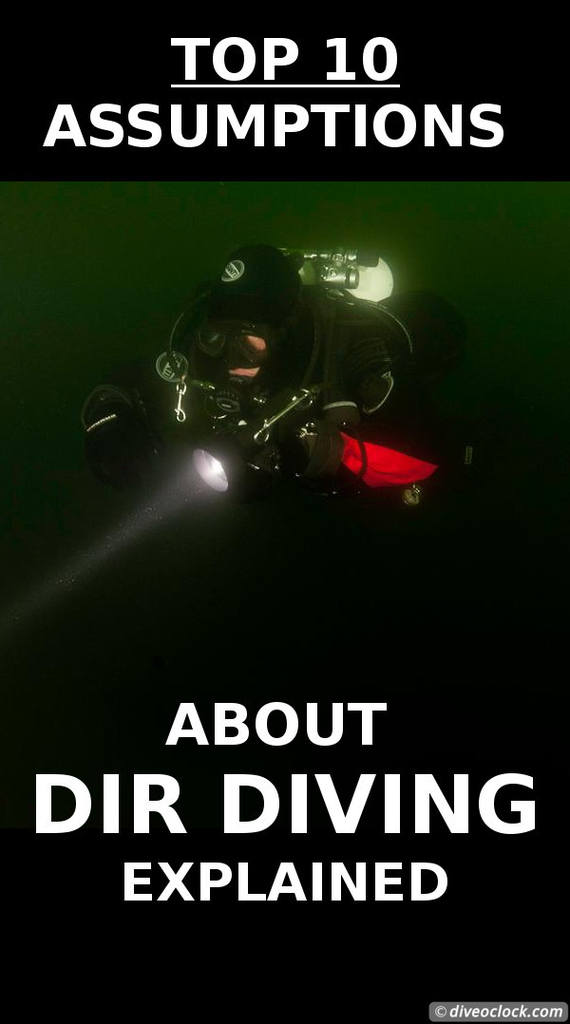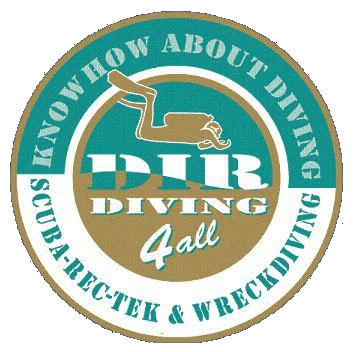
Ever Heard of DIR Diving? 10 Assumptions Explained
The abbreviation DIR stands for Do It Right but what is DIR diving exactly? Is it technical diving? Is it breaking safety standards? Time to ask some DIR diving professionals
Years ago when I was diving in the Netherlands I saw a group of DIR divers getting ready for a dive like they were going to perform top sport. All dressed totally black, having the same equipment in exactly the same place and talking about the dive like they where going to set a world record or maybe even like the Navy SEALs. It intrigued and even scared me a bit. Are they the true rebels of diving?
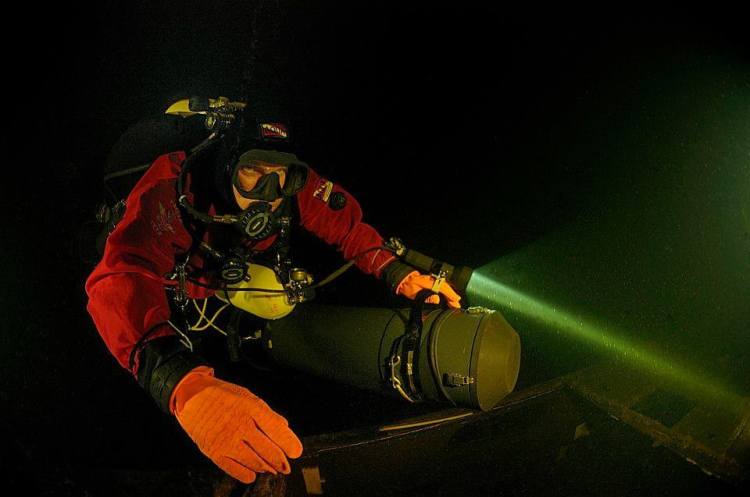
Ivar during a dive with DIR standards and equipment.
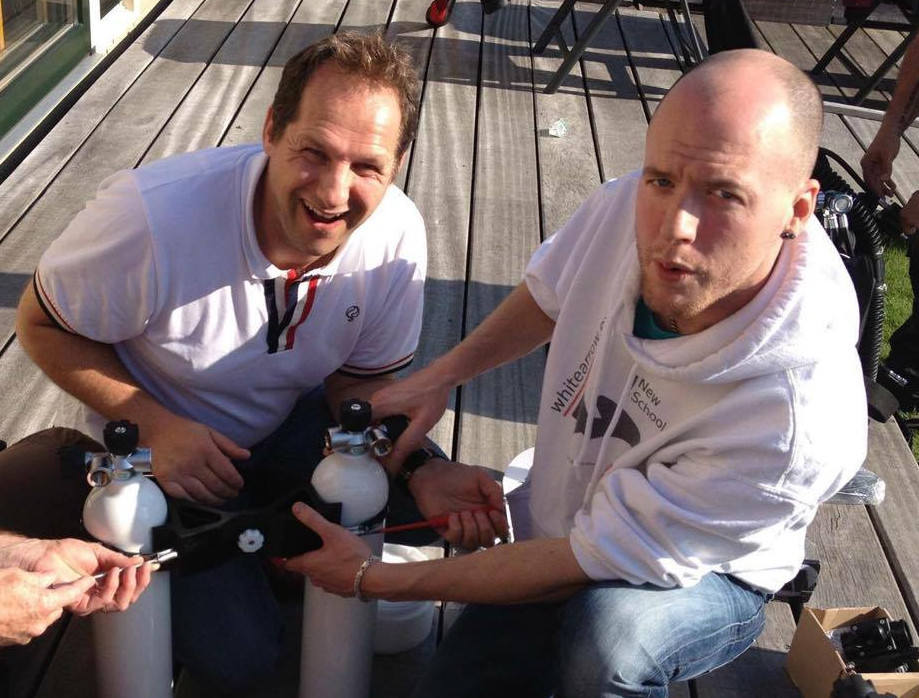
Remko & Håkan preparing for a dive
The three other contributers are Ivar Thor Klerks (Dive Instructor Evaluator), Matt Mandziuk and Håkan Gustafsson (both Dive Instructor Examiner at IDREO). IDREO (International Diving Research and Exploration Organization) is similar to DIR, but more focused on underwater overhead environments.
Quick links to the Top 10 Assumptions about DIR diving
- DIR diving is a form of technical diving
- DIR diving is a mindset, not an educating system
- DIR diving is all about wrecks, cave and deep diving - forget about corals and fish
- The DIR training is potentially dangerous as it exceeds recreational dive limits
- There are pieces of equipment a recreational diver uses but a DIR diver will never use
- Some DIR techniques are used in recreational diving nowadays
- All diving equipment needs to be black
- DIR divers are healthy, fit and they do not smoke
- DIR diving is not commercial
- DIR diving is more expensive than 'normal' recreational diving

1. DIR diving is a form of technical diving
Remko: Although it is originated from cave diving we do not call it technical diving. DIR diving is quite big in the USA and Mexico around caves and cenotes. Here in The Netherlands you have hundreds of DIR divers as well. Only about 10% is doing the technical part of DIR, about 40% is doing it fully recreational to improve their skills.DIR is simply about doing it the best possible way, to make any kind of scuba dive simple to understand and most of all not complex. Most of the time it is not rocket science. We try to keep it as simple as possible at all levels, therefore KISS (Keep It Simple Stupid) is one of the fundamentals of our way of scuba diving. But I have to be honest, on every detail we prepare for “What if...” We use a simple checklist for all these kind of needed tools to make it as SAFE as possible in all levels.
Some examples:
- Do we need only one spool and SMB?
- What kind of lines we need on our reels for this dives?
- What kind of rebreather configurations we will be needed in our dive project?
- How many and what kind of gas does the team require?
- What will be the bailout (emergency) plan, to make the dive safe?
- What kind and how many DPVs do we need for this expedition?
- What is the burn time (lights/torches)?
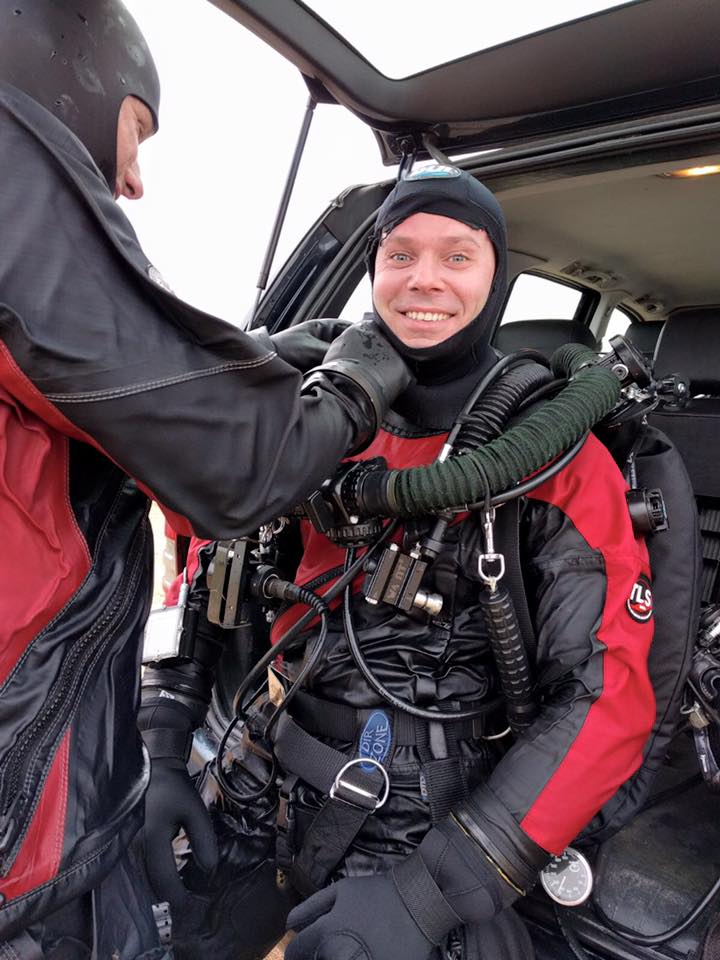
DIR equipment and pre-dive check
Hakkan: DIR is a standard and organized platform. It is all the same from equipment to having the same dive profile and gases.
Matt: DIR Diving is a more progressive form of scuba diving that has evolved from years of improvements in diving science, technology, team diving and awareness. The focus is to improve foundation skills from the very beginning, teaching divers the right skills in the right equipment from day one. From there divers can grow, improve and participate in more challenging training and environments.
2. DIR diving is a mindset, not an educating system
Remko: For some DIR divers it is their way of life. For the rest (most DIR divers) it is just a tool to have a solid ‘building block’. We love to train basic skills, to be able to make extended range overhead dives, on caves, mines and (deep) wreck for example. Therefore we need to train basic building blocks. We like to do that with team divers who are trained at the same level.We make use of tools like DPVs (diver propulsion vehicle/underwater scooters), all kind of open circuit and rebreather (closed) scuba systems, backmount (tank on your back) and also sidemount (tanks on the side). For big projects it is necessary we train with complete rebreather systems too, that can be setup as CCR (Closed Circuit Rebreather), PSCR (Passive Semi-Closed Circuit Rebreather) and as ApSCR (Assited Passive Semi-Closed Circuit Rebreather) systems. In long range penetration dive projects we use habitats as well, creating an air space underwater in a flexible or solid shape. Training all needed building blocks makes us who we are, dive explorers at all levels of recreational scuba diving.
Ivar: DIR can be fully recreational, in that case it is more of a mindset. The recreational DIR diver wants to improve his diving skills, be more precise, have better control and more routine during drills in preparation for an emergency. With standardization of procedures comes a toll: You need to train to get to know those procedures. That is education because you do not have to come up with those procedures yourself. Once you know them you need to keep them fresh, that is the mindset.
Håkan: DIR diving is a philosophy and standard way to approach team diving and building the team up from the base. Covering all equipment, gases, techniques and the right mindset. You need to focus on the team not only on your personal goals.
Watch the video of DirDiving4all.org: Become an safe and efficient diver Explorer!
3. DIR diving is all about wrecks, cave and deep diving - forget about corals and fish
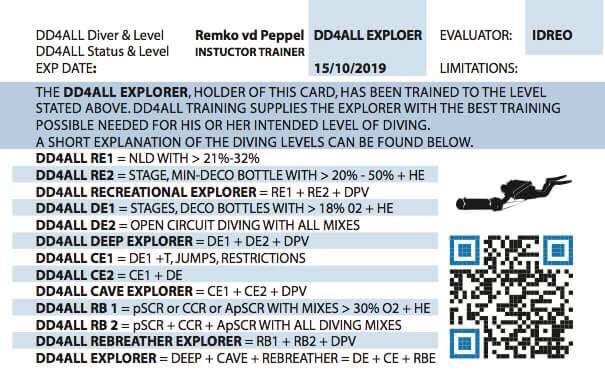
DIR certification courses
- Single failures, double failures, triple failures
- Level 1-3 to Recreational Explorer (Helitrox; only helium and oxygen) open circuit and rebreather divers.
- Level 4-5 to all other level Dive Explores (Trimix; helium, oxygen and nitrogen) open circuit and rebreather divers.
4. The DIR training is potentially dangerous as it exceeds recreational dive limits
Remko: Not knowing how to act as a team in case of emergency makes your team weak. Training all building blocks with a team divers gives you most of all a lot of fun. Training failure levels 1, 2, 3, 4 and 5 skills will make yourself and the rest of the team extremely good scuba divers. That level divers are able to invite global (same level) trained, mindset team divers, to make dive project and explore overhead environments where no man has ever been before.Ivar: NO... BIG NO! Diving should be as safe as possible, that is why we train. During training, the diver performing a drill is closely watched by the buddy, buddies or instructor. They have only one task, to make sure your buddy is safe! To do so the buddy will only watch depth, position and the person doing the drill, performing the same drill one step ahead and ready to intervene when a drill goes wrong. Training for deep and or cave diving will always be started in shallow open water and move slowly towards the real setting.
Håkan: Because of different gases, longer bottom time and even roof over your head the mistakes are more dangerous.
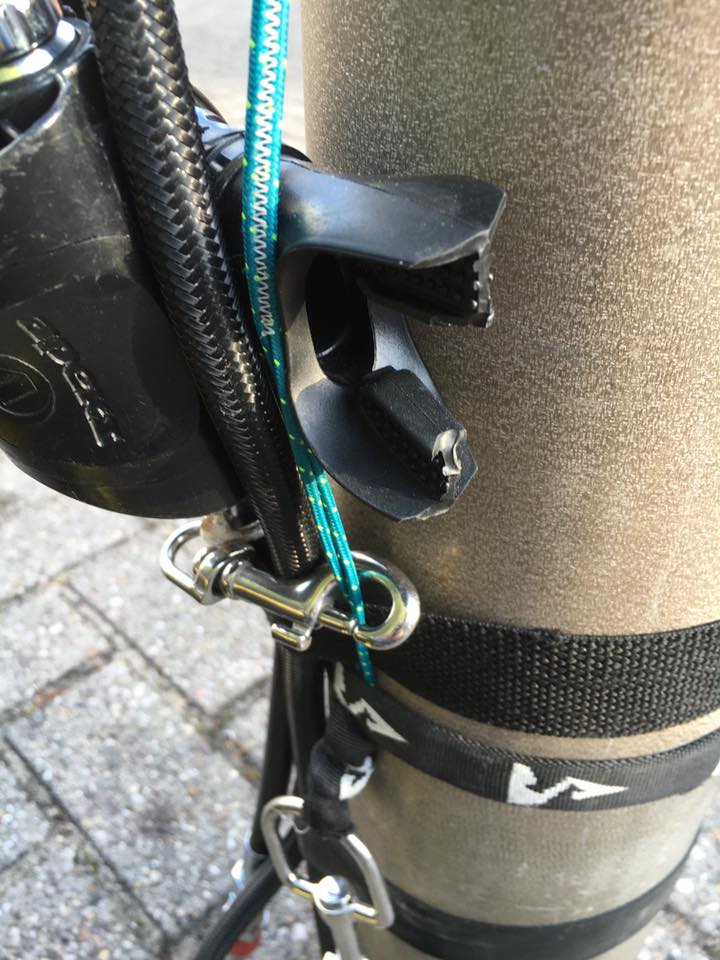
Sidemount tank preparation
5. There are pieces of equipment a recreational diver uses but a DIR diver will never use
Remko: In recreational diving you see education machines changing courses, removing learning to dive with dive tables for example, using computers only. When the shit hits the fan your dive is depending on what your computer tells you only. The buddy team is not able to extend the dive beyond the limits of computer tables for decompression purposes. Your computer table will give you decompression time, where you have to stay on the surface before doing your next dive. We think it is better to do all decompression time underwater. That is one of the reasons why we always dive with more gas/several tanks as well.Ivar: A snorkel has never made sense to me, if you need to save gas on the surface, you are not taking enough with you. A dive computer can be annoying because it can take an other approach to the decompression strategy, there is a big difference between some brands of computers in decompression time too. We prepare our dive, we know our maximum bottom time and depth, we know our decompression time and plan our gas usage too, including extra gas for emergency.
6. Some DIR techniques are used in recreational diving nowadays
Remko: Sidemount is an example. There are dive configurations from recreational dive organizations we love to use inside DD4ALL as well, also with the use of sidemount rebreathers.Another example is the backup regulator at short hose and necklaces bungee, part of our primary backup system. Although there are many ways of doing this we have one standard configuration. Do not be fooled by rubber necklaces cords being sold as DIR based products, in some cases a diver might drown because he gets unconscious with a bungee tied-up around his neck. This is far from how we configure them and how we use them in our dives. In normal Nitrox courses we train all kinds of rescue skills and drills with it. In Trimix based dives we train with this backup system, transporting unconscious divers with the bungee stuck on our head, if he wakes up during transport he will breath no water but only gas. We can not be sure divers will survive this kind of failures during a cave dive. But this will be the best way to transport him, where this bungee configuration is “in all basics” major important to learn, and how we like to dive and train with it. From day one the same way, in to be used all levels of scuba diving!
Ivar: Wings (bladder and harness instead of jacket/BCD) are spreading. I have seen the bungee in recreational diving being used the wrong way, sharing the bungee regulator, risking pulling out the mouthpiece when donating. So only adopting gear is not the way to go, with different gear come different procedures. Long hoses in 150 cm are good for divers without a canister light, having a cord between the light head and canister with possible entanglement. Light communication is slowly becoming a bit accepted as well.

Remko diving in the Netherlands
7. All diving equipment needs to be black
Remko: DIR is based on dressing for safety and success in (overhead) dark underwater places. With this kind diving bright colored masks, hoses, fins and drysuits will light up too much and distracts too much. Not only in the team but also to other divers in other teams passing-by. This works for all levels.Ivar: Black just looks good, it is an old saying, nowadays you see more rainbow gear out there, all my drysuits have a different color for example.
8. DIR divers are healthy, fit and they do not smoke
Remko Doing fitness or condition training will make you a fit person. Regular scuba courses based on the World Recreational Scuba Training Council (WRSTC) are build to educate any kind of people. There are simply no built-in restrictions inside recreational education machines other than a medical check. Even overweight persons without good condition may dive recreational or divers that smoke, with lungs filled with tar can be diving recreational. Again, ”What if?!” It is better to have healthy longs with clean alveoli and a fit body to be able to stay confined in possible higher stress levels during a dive.Ivar: Yeah, they should be, just because it is better. But not all of them are though. I would even ban alcohol during and before projects. On the other hand I do not always eat my veggies. So who am I to judge?
9. DIR diving is not commercial
Remko: Most of the DIR related instructors we know ask low prices, about 20 to 30 Euro per hour depending on the training level. That brings recreational sport divers to the highest level of training this industry is aware of. Open water divers train to RE level 1 ‘team divers’ is the biggest fundamental change all DIR based divers have to make. All 4 separate educational levels;- 1 = RE, Recreation Explorer
- 2 = DE, Deep Explorer
- 3 = CE, Cave Explorer
- 4 = RBE Rebreather Explorer
Ivar: Instructors have to eat too.
10. DIR diving is more expensive than 'normal' recreational diving
Remko Yes, that is true but there is also a turning point. We introduce tools like DPVs and all kind of Rebreathers into our dives to make extended range dives possible and make deep dives less expensive in needed gas consumption. Helium is an expensive gas for example.Ivar: Yes, it is a bit more expensive in recreational. We prefer twin sets (two-tanks) over single tanks, two first stage regulators instead of one, a light source, Nitrox over normal air and a drysuit instead of a wetsuit but that is it. In technical and cave diving the gear is completely or almost the same only breathing gasses can differ a bit. This means you do not need to buy another set of equipment when you extend your training.
More about DIR!
There are various groups/organizations preforming DIR techniques, some are really controversial - like a sect where not everybody can join and specific pieces of equipment are mandatory and others are forbidden. The DIRDIVING4ALL network is the official platform for DIR diving training, open for everyone.Visit their DIRDIVING4ALL website for more information about standards, training activities and courses. Of course you can mail Remko directly as well, his email adress is: remko@dd4all.org.
Also DIRDIVING4ALL supports a charity project named: Donations for Ichthyosis Research. Ichthyosis is a skin disorder causing a widespread and persistent thick, dry, "fish-scale" skin. This charity is founded by Remko van de Peppel because his daughter is born with Netherton Syndrome, a variation of Ichthyosis. If you wish to donate for the research and treatment of Ichthyosis you can contact Remko by email (mentioned above) of visit this webpage.
Special thanks to Remko van de Peppel and the other DIR professionals who have contributed to this article.
It has been a pleasure to get to understand a bit more about DIR diving and their role within the diving community.
What do you think of DIR diving after reading this article? Share your thoughts below!
If you like this post, hit that like button on our Facebook page and stay tuned for more!
Marlies Wolters
Founder of Dive O'Clock "It's dive o'clock somewhere!"
Founder of Dive O'Clock "It's dive o'clock somewhere!"

Continue reading

Taking the next step: Intro to Technical Diving

Can You Have Fun While Learning Technical Diving?

Important Things to Consider Before Deep Wreck Diving

SS President Coolidge, The Largest Easy Accessibly Wreck in the World (Vanuatu)

Islas Hormigas Marine Reserve - Top Mediterranean Dive Spot (Spain)

SCUBA QUIZ: How Deep Can You Go?
Share this page:








